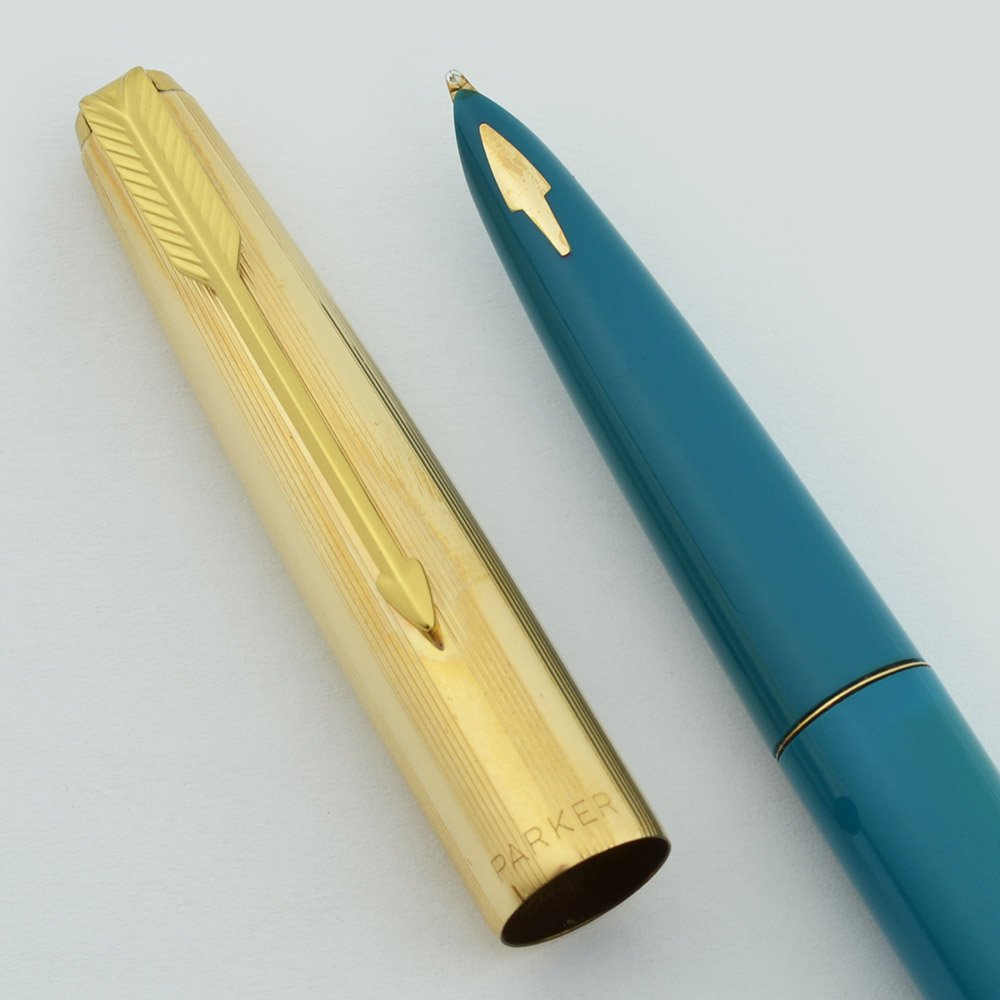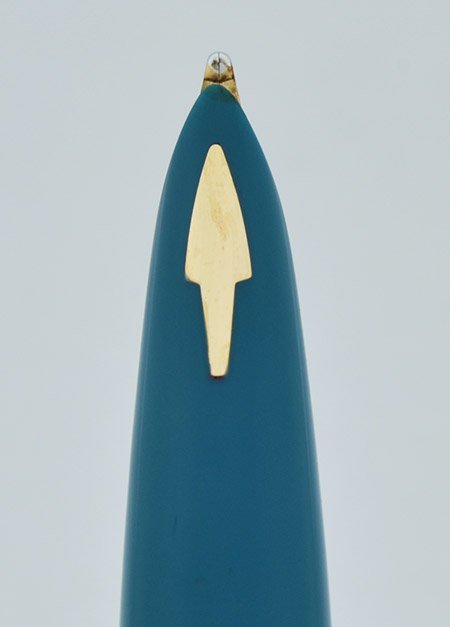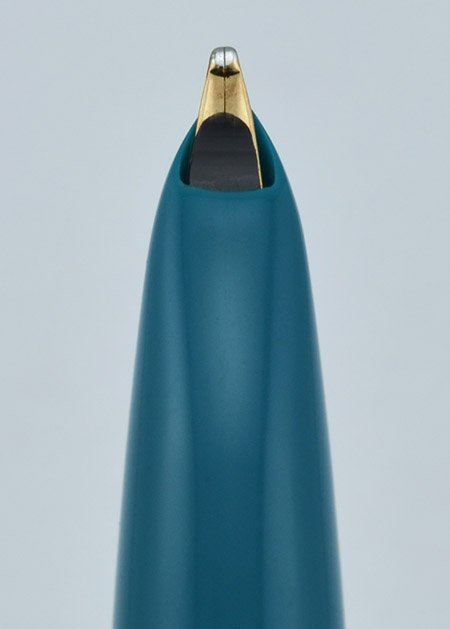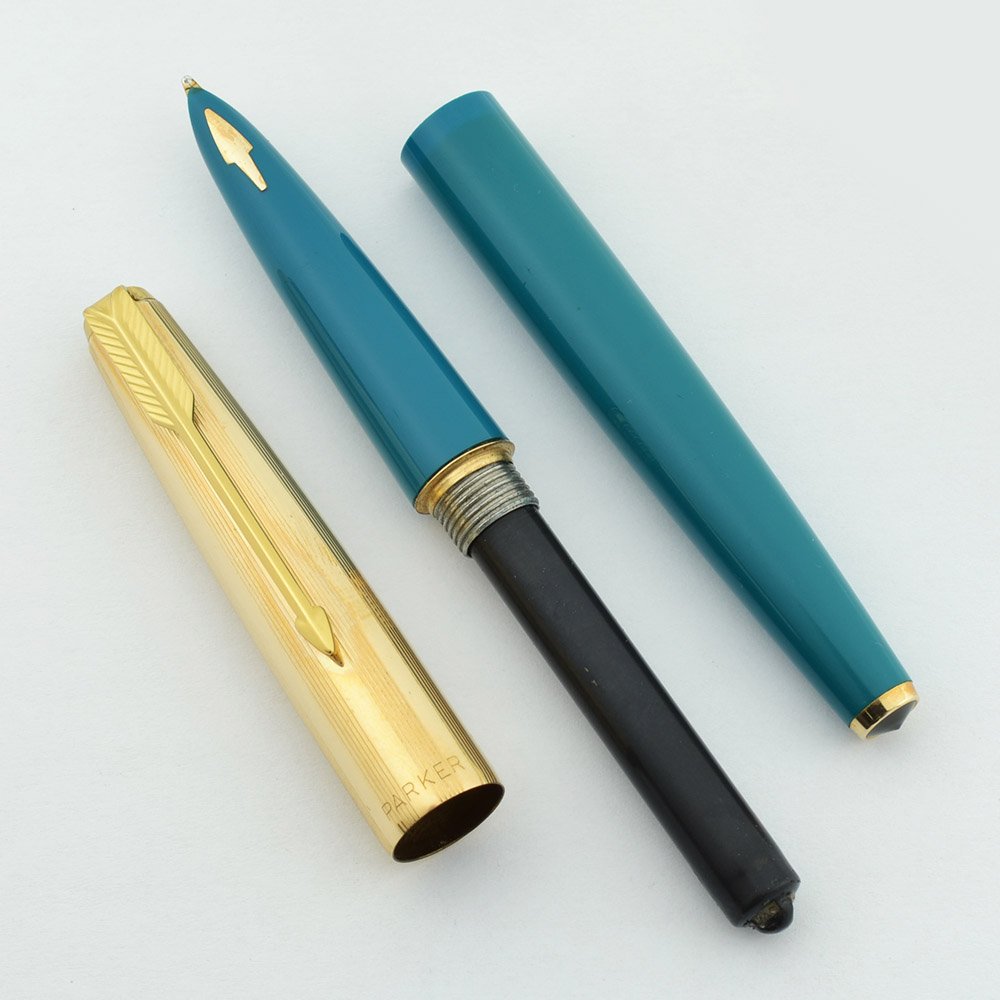Product Description
Type fountain pen
Product Name Parker 61, Mark 1
Manufacturer and Year Parker, made in USA – late 1950s, early 1960s.
Length 5-1/4"
Filling System The fountain pen has the capillary filling system which is unique to this model. See further details below.
Color Vista Blue body with a 1/10 12k gold filled cap, gold plated trim, and pearlescent jewels on either end.
Nib BROAD gold nib is super smooth with perfect tipping material.
Condition Superior condition, near mint, both cosmetically and functionally. The white sponge showing thru on the end of the capillary filler suggests that it has never been inked. The gold arrow inset on the hooded section is very clear and perfect looking with no scratches or wear. No cracks or chips, dings or dents, or personalization. The teflon cell is in perfect condition with no scratches or peeling teflon. The spring-loaded valve in the end of the barrel is nice and springy. We tested the pen to make sure the capillary fill system was working properly, and we can confirm that it does.
A word or two about the Parker 61 Capillary Filling System. If you are not familiar with this unique design, you should read this.
Here is how you fill a Parker 61, and an insight into how the pen actually works. Unscrew the barrel and stick the back end of the pen (aka the capillary cell) into a bottle of ink. Wait a few minutes (probably more like a half hour when you first start one of these older used ones), and let the ink wick up into the capillary cell. The cell contains a sheet of perforated plastic that has been given a 3-D pattern resembling tire tread, and rolled up. The perforations allow ink to seep between the rolled-up layers, and the tread pattern maintains space between the layers. In the middle of this tube, which runs the entire length of the capillary cell, is the feed. To keep things clean, the capillary cell has on a coating of teflonon the outside that is intended to shed ink as the user withdraws the pen from the ink bottle, leaving very little ink to be wiped off. The end of the barrel contains a spring-loaded thingey which covers the open end of the capillary tube, but still allows it to vent.







